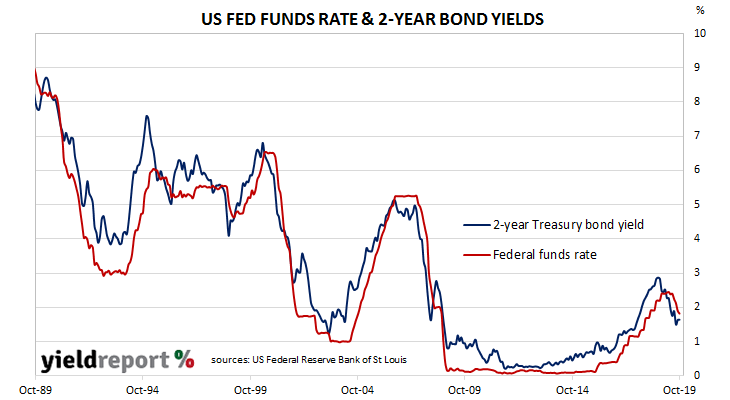The US was at the heart of what became known as the “Global Financial Crisis” in 2008/2009. As the US economy fell into a deep recession, the Federal Reserve rapidly cut its interbank overnight lending target range to 0%-0.25%. It left this target range close to zero for over seven years until it began to “normalise” interest rates through 2016, 2017 and 2018. However, in early-2019, it was spooked by prospects of a slowing global economy, falling bonds yields and the beginnings of the US-China trade dispute. Shortly thereafter, the Fed began to flag a change in its policy and markets become accustomed to the idea of future rate cuts. The first cut in the cycle arrived in July, with another one coming in September.
As widely expected, the Federal Reserve cut its overnight interest rate target by 25bps at its latest monetary policy meeting. The Fed’s interest rate setting committee, known as the Federal Open Markets Committee (FOMC), reduced the Federal Funds target range from 1.75%-2.00% to 1.50%-1.75%.
ANZ economist Kishi Sen said the statement which announced the decision was different from recent ones. “Interestingly, unlike previous statements, the Fed offered a more neutral statement to the market. It highlighted a moderating growth environment and despite a pullback in non-farm payrolls, it remains optimistic on the US jobs market.”
Westpac’s finance AM team seemed to disagree at first but they too noted a change, saying “The statement was largely a copy of September’s, with the main change being the removal of the phrase “act as appropriate”, saying instead it will “assess the appropriate path….”. Westpac also noted another cut was not flagged but the Fed “retained the optionality to do so.”

